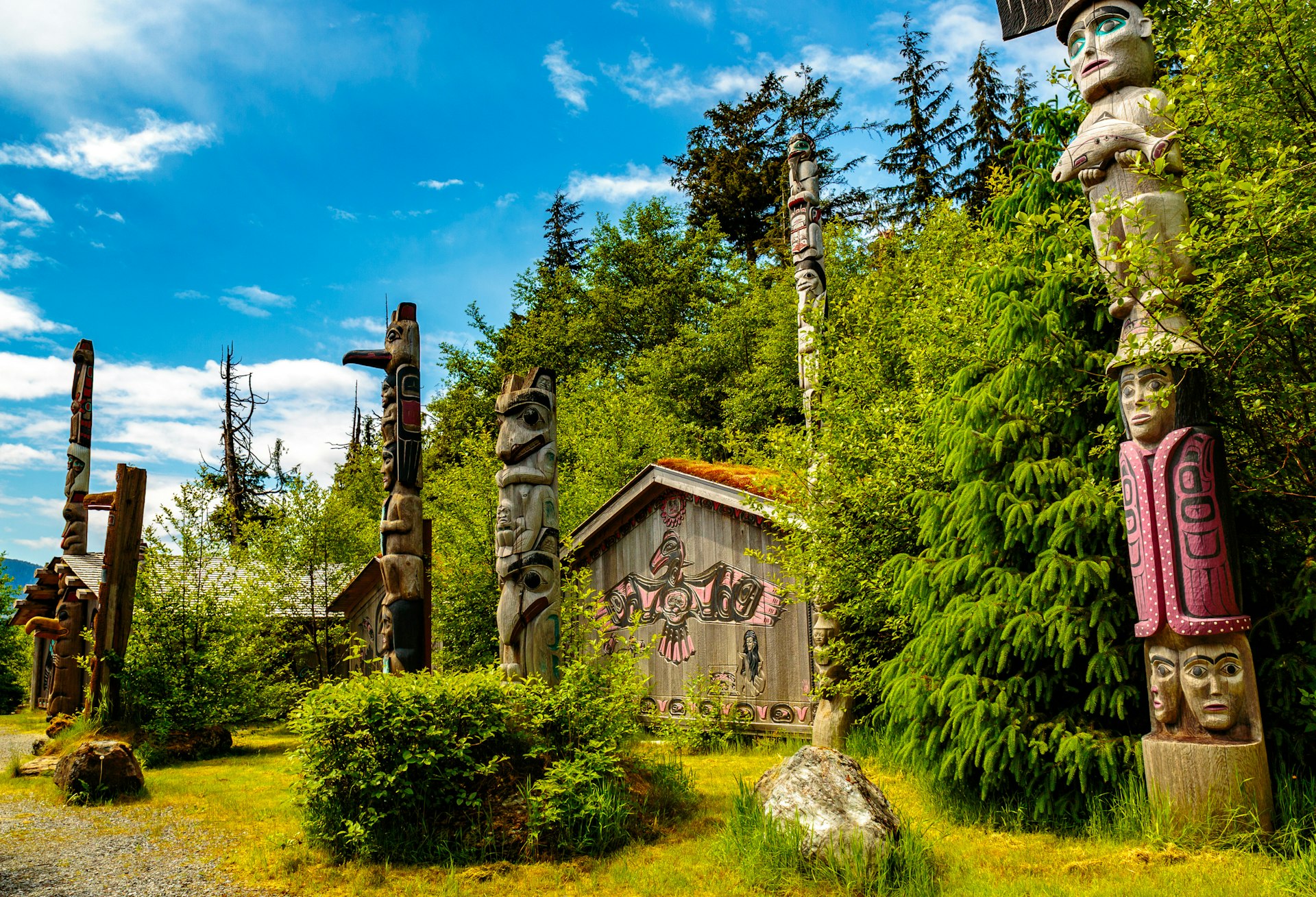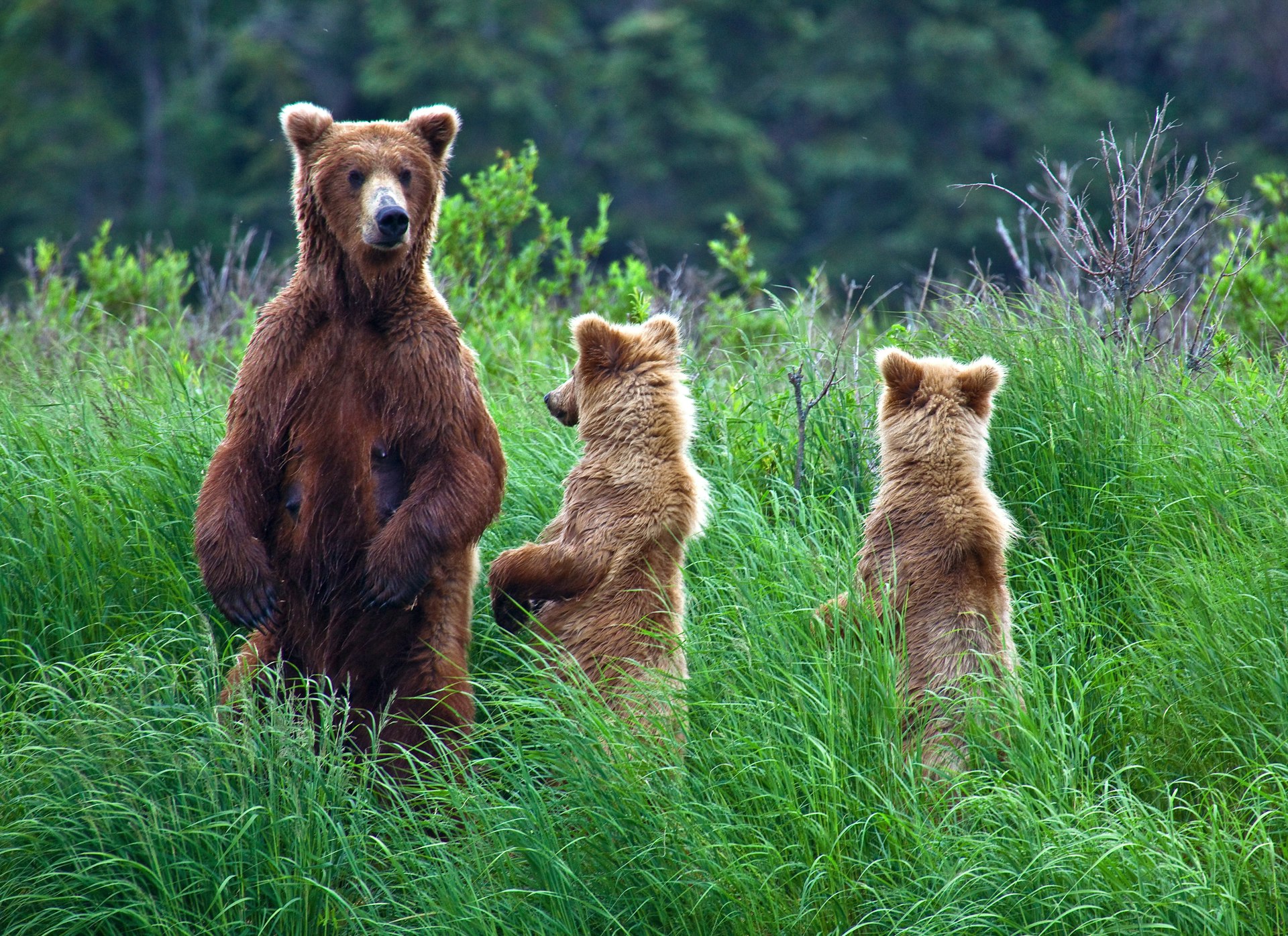Alaska is bigger, colder and more remote than any other state in the US.
Pure, raw, unforgiving and humongous in scale, it is a place that calls to those with wanderlust and a strong sense of independence. There are thrilling adventures to be had here, but also pitfalls to be avoided. Take precautions, but don’t let the wilderness spook you.
Few other places in the US allow you to scale an unclimbed mountain, walk where – quite possibly – no human foot has trodden before, or sally forth into a national park that gets fewer annual visitors than the International Space Station. Here are some tips on how to plan (and survive!) a trip to the great north of America.
1. Early birds get better accommodation
Alaska’s summer season is relatively short (May to September), and places to stay fill up quickly. Book accommodation at least two months in advance, especially in smaller towns where choices are limited. The same goes for campgrounds – you won’t be the only one looking for a pitch in peak season.
2. Book excursions early too
Other big-ticket items can also get overbooked. That multi-day kayaking trip you were keen on? The fly-in, bear-spotting excursion you’ve been dreaming about since Christmas? Book ‘em up before May to avoid disappointment.
3. Bring an eye mask for summer nights
In high summer, it barely gets dark in Alaska, particularly in the far north. If you’re a sensitive sleeper, bring an eye mask. Hotel rooms have curtains, but tents don’t.
4. Renting a car? It might not be necessary
A large proportion of Alaska is off the road network, so a rental car isn’t always an advantage. Ferries connect the far-flung towns of the Alaska panhandle, Prince William Sound and the Alaska Peninsula, while bush planes are the only way to reach the remote, road-less expanses of the north and west.
The Alaska Railroad will get you to the gates of the state’s two most popular national parks: Denali and Kenai Fjords and once you get to the parks, busses will get you around. We can’t recommend the railroad enough. If you’re curious how to plan on the train check out Sarah Stocking’s article on how to plan it. There are even buses that do a relatively good job linking Anchorage and Fairbanks to places as far apart as Wrangell-St Elias National Park, Tok, Chicken and Deadhorse on the Arctic Ocean.
5. You’ll need at least a week in Alaska to do it justice
Stay in Alaska for at least a week to get a taster in destination, but 10-14 days will give you a proper overview of the state. That’s enough time to take the Alaska Marine Highway from Bellingham, WA, to Skagway – one of the state’s great road trips – or to ride the rails from Fairbanks to Seward.

6. Alaska’s Native culture
Indigenous people – who prefer to be called Alaska Natives – comprise around 16% of Alaska’s population. Many live in 229 federally recognized villages, and their culture varies widely. Key communities include the Inupiat in the Arctic, the Athabascans in the Interior, the Aleutians in the Southwest and the Tlingit and Haida in the Panhandle, to name but a few.
Sadly, a disproportionate number of Native Alaskans (25%) live below the poverty line.
The 1971 Alaska Native Claims Settlement Act gave Alaska Native corporations and villages title rights to 44 million acres of land – that might sound substantial, but it’s only about one-tenth of the state. Due to Alaska’s isolation and late colonization, the state harbors just one native reservation: the Metlakatla Indian Community on Annette Island just south of Ketchikan.
Viewing totem poles will also give you some insights into the Native culture of Alaska. Emblematic of the people of the southeast coast and British Columbia, these zoomorphic sculptures are loaded with cultural, historical and artistic significance. You’ll find an abundance of totem poles in the southeastern panhandle, particularly in Ketchikan’s Saxman Village and Totem Heritage Center, and Sitka’s National Historical Park.
7. Eating out is casual
Restaurant food is often expensive in Alaska, but eating out is casual, and it’s not usually necessary to pre-book tables except at posher places in Anchorage and Juneau. Meat and fish are staples; outside of cities and large towns, vegetarians and vegans may have less choice than they would in other parts of the US.

8. Pack practical dress rather than posh dress
Alaska’s weather can be unpredictable, and the temperature and conditions can vary greatly with altitude and latitude. Be sure to pack a warm fleece and waterproof jacket and leggings, even in the summer. Take a hat and gloves year-round in the Far North, and make sure your footwear is warm and durable, with good grip.
Restaurants rarely have strict dress codes, and Alaskans don’t usually glam up for dinner. You’re better off leaving the suit and high heels at home.
9. Some of the best bars are dives
True, there are plenty of hip micro-breweries in Alaska, but you can’t really call yourself a bona fide sourdough (old-timer) until you’ve braved a beer in a dive bar full of grizzled locals sporting Klondike beards… with a carpet that hasn’t been cleaned since 1974.
10. The crime question
The Alaskan wilds are an environment to be taken seriously, and Alaska’s cities can sometimes be rough around the edges. Alaska currently has the highest crime rate of any US state, the most commonly reported cases being aggravated assault. Violence against women is also depressingly widespread.
However, in general, crime is an urban phenomenon, especially in Anchorage. As a visitor from out of state, it’s unlikely you’ll face too many issues if you follow basic common sense safety precautions, stay vigilant and stick to well-trodden routes in daylight hours.

11. See bears (but from a safe distance)
Bears are everywhere in Alaska. Black, brown (grizzly) and polar bears are found from the frozen wastes of the Arctic tundra to the parks of metro Anchorage. While you don’t want to let a fear of bears limit your adventures, it’s important to heed a few basic warnings and minimize your chance of a dangerous close encounter.
If you do meet a bear on the trail, do not turn and run – even if you’re the world’s fastest sprinter, you can’t outrun a bear. Stop dead, make no sudden moves and begin talking calmly to the animal. Most bear charges are bluffs, with the animal veering off at the last minute. If an encounter is imminent, drop into a fetal position, place your hands behind your neck and play dead. If a bear continues biting you after you have assumed a defensive posture, then you must fight back vigorously.
To minimize the chances of this happening, it’s highly advisable to carry bear spray if you’re spending any time hiking or biking on trails. Bears can show up unannounced anywhere – the heavily used Tony Knowles Coastal Trail in Anchorage is no exception. Even joggers might want to consider investing in a strap-on belt to carry a bear spray canister.
These defensive aerosol sprays contain red-pepper extract. Canisters cost $40 to $50 and are effective at ranges of 18-24ft but must be discharged downwind. As you can’t take bear spray on airplanes, you’ll need to stock up on arrival in Alaska.
12. All wild animals are unpredictable
Bears aren’t the only potentially dangerous animals. You also need to be careful around moose, cougars, musk oxen, elk, wolves and other large animals. As a general rule of thumb, all wild animals are unpredictable – give them enough space and don’t expect them to keep still and pose calmly for photos.

13. There’s a reason the mosquito is Alaska’s unofficial state bird
Everything is bigger in Alaska, even the mosquitoes. The muskeg swamplands are full of them, and they’re ferocious. Bring repellent – and pick a brand with a high percentage of DEET!
14. Hiking is a different sport in Alaska
Alaska’s backcountry can be brutal – bereft of phone reception, light on even basic facilities and lashed by fickle, often hostile weather. You’ll need to pay extra attention to the conditions when making hiking plans.
It’s always best to hike in groups or with a friend. If you’re going it alone, be sure to leave details of your itinerary with a responsible friend or a park ranger. Always tell someone where you are going, when you are leaving and when you plan to be back. Some trails have sign-in boards at the trailhead for added peace of mind.
Don’t even contemplate a day-hike without taking the backcountry basics – bear spray, some method of water purification (tablets or filter), energy bars, extra clothing (whatever the weather) and a mobile phone (which can also act as a flashlight, compass, altimeter and route-finder).
As any high school teacher will tell you: it’s best not to leave your homework until the last minute. Read trail reports, study maps, research recent wildlife activity, and investigate other potential pitfalls before setting out.
Ready to plan your trip to Alaska? Here’s your next steps
Add these top experiences to your itinerary
These road trips will take you to all the highlights in Alaska
Start crafting your budget with these tips
